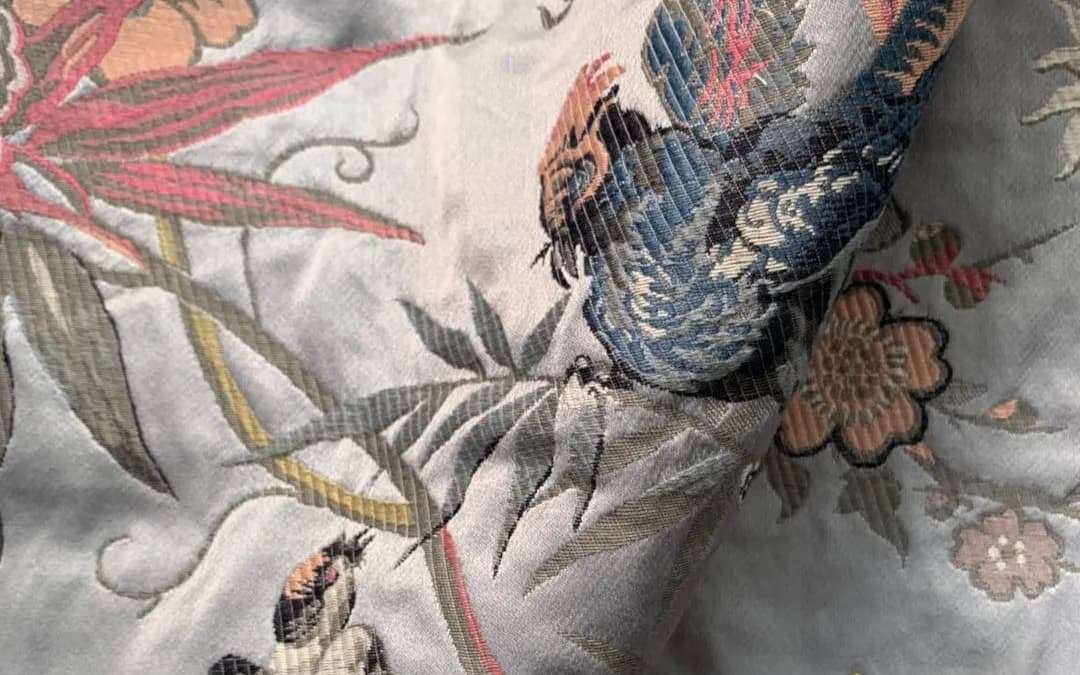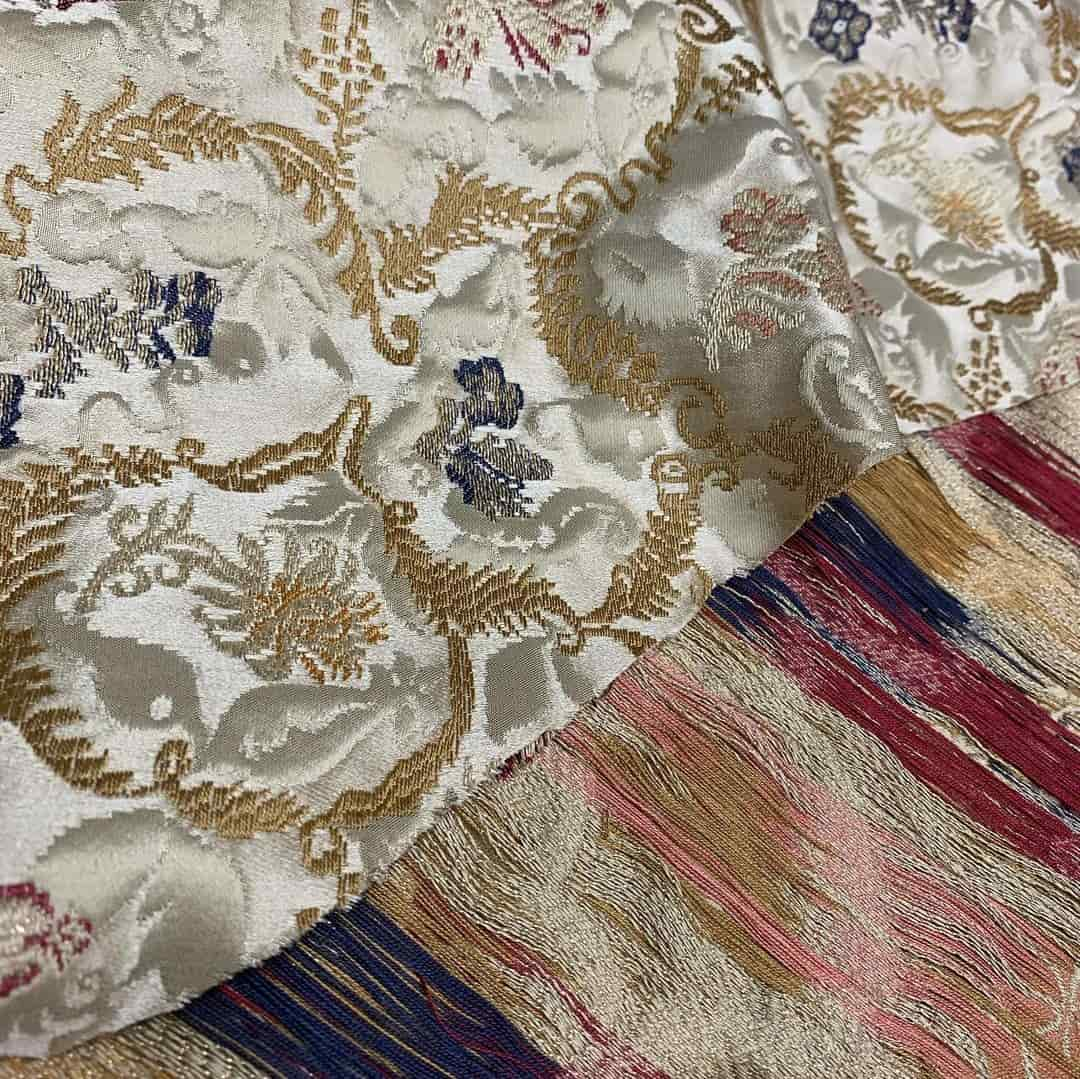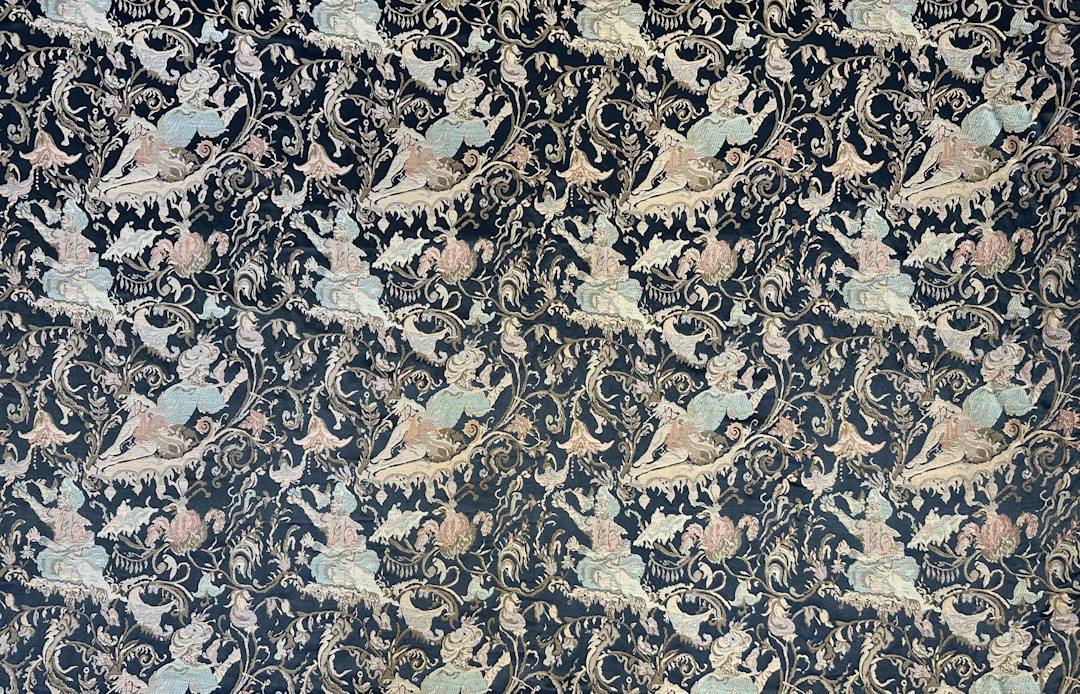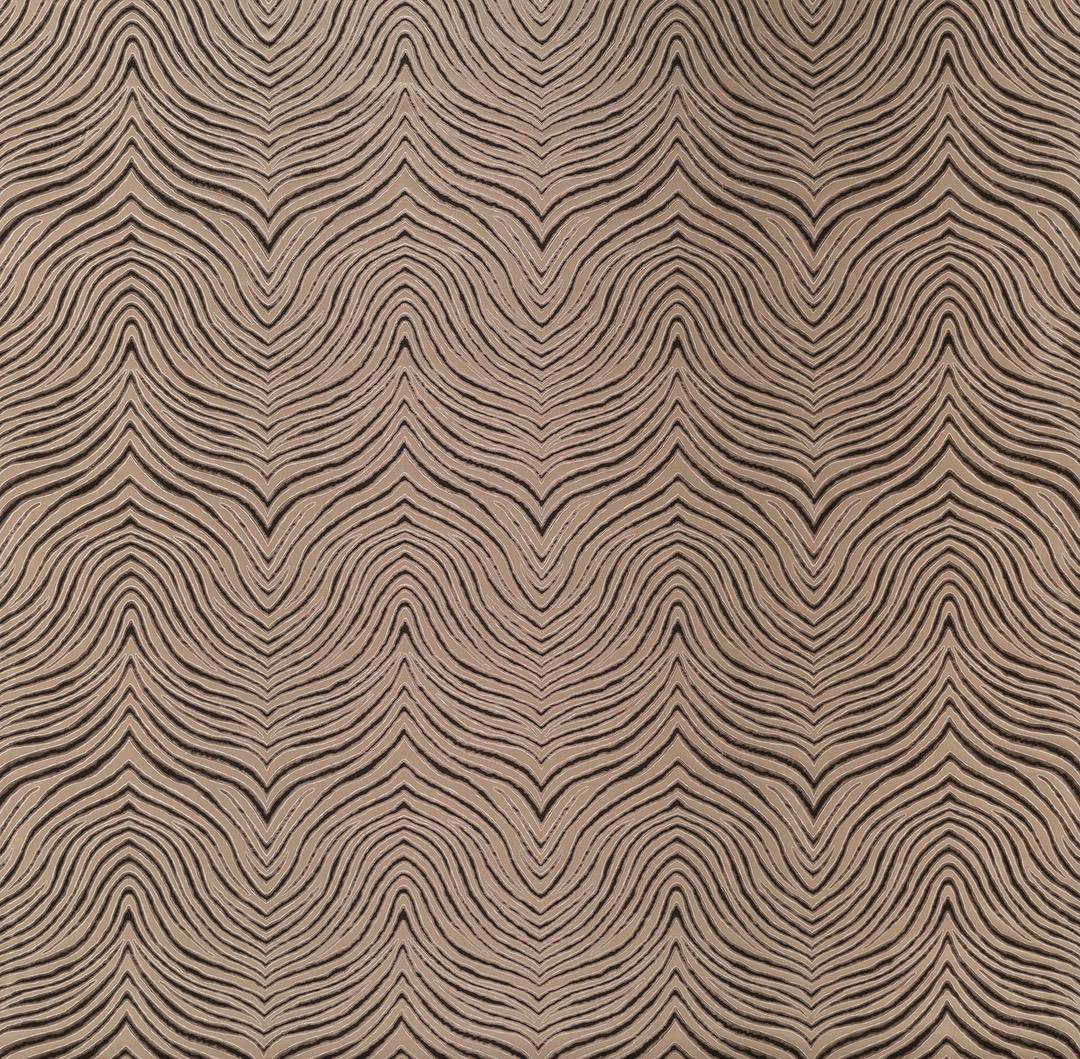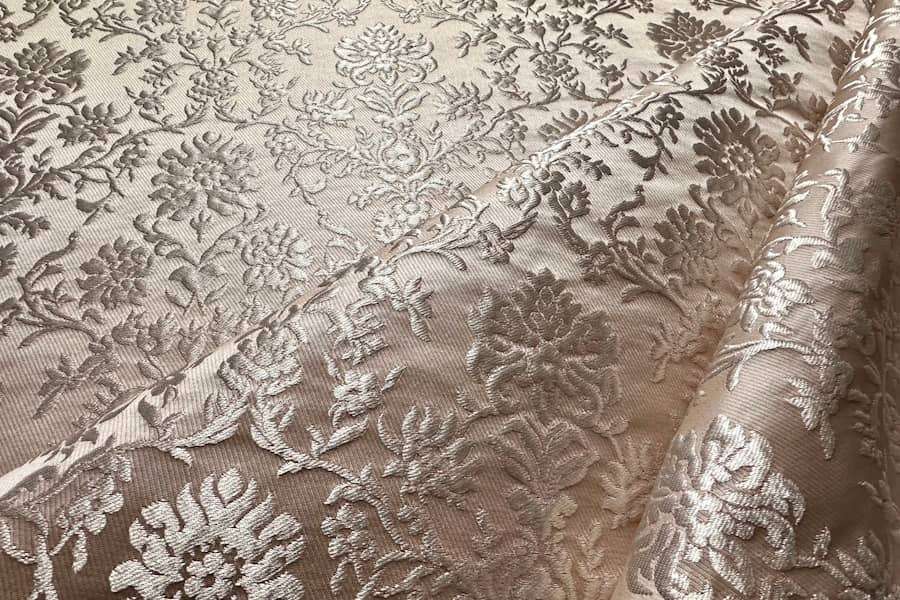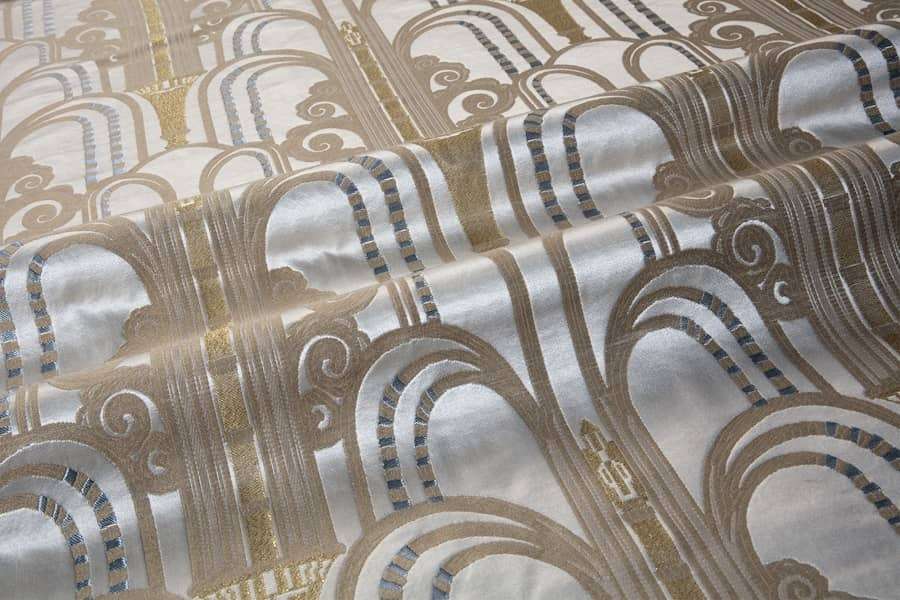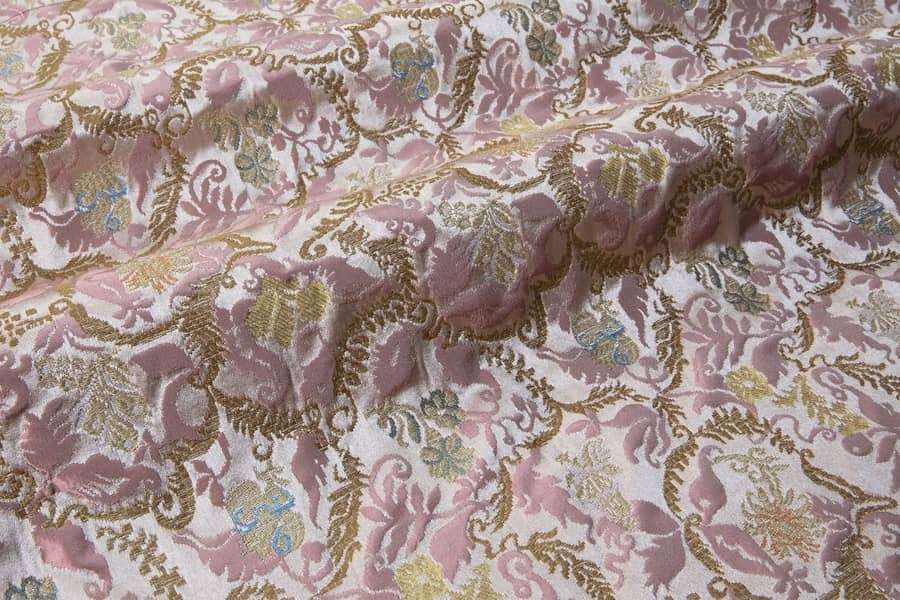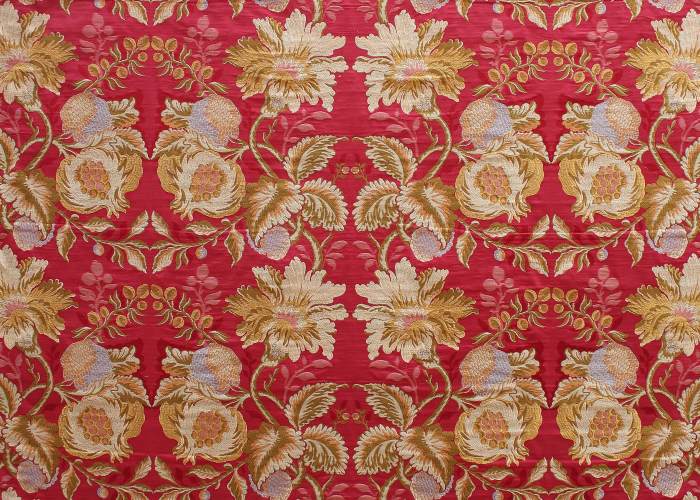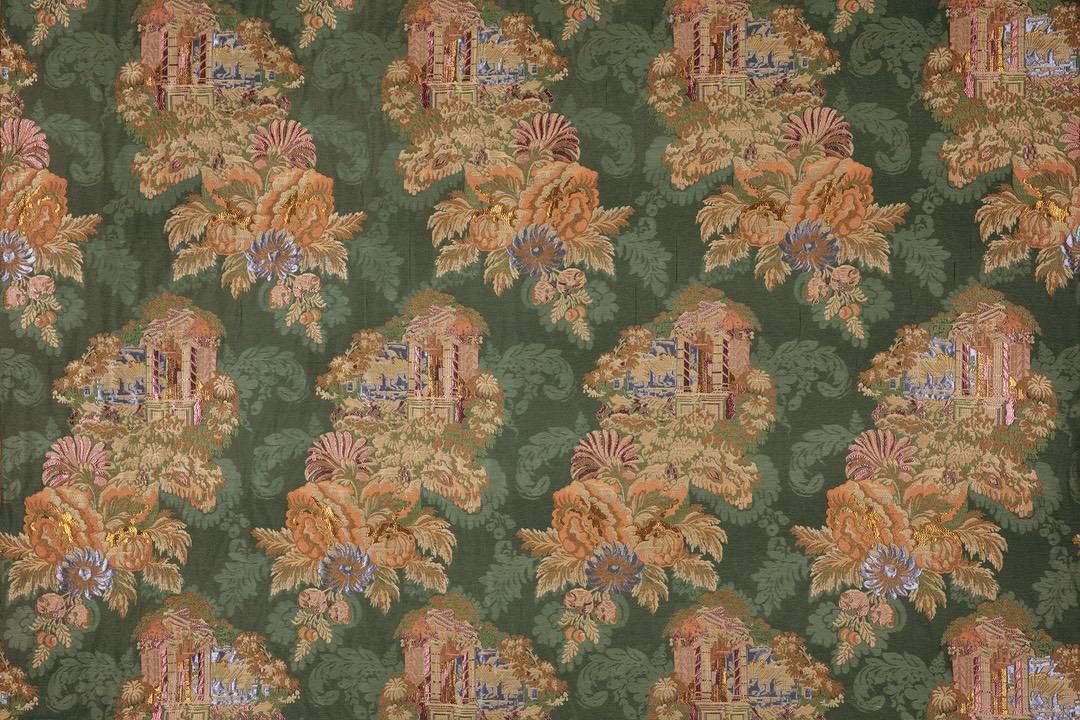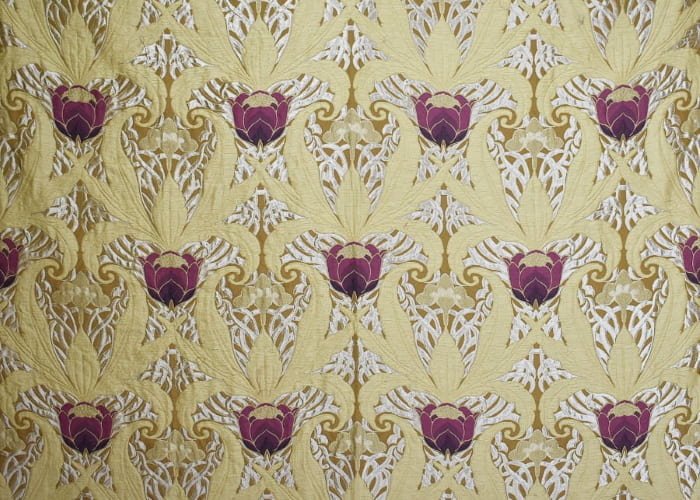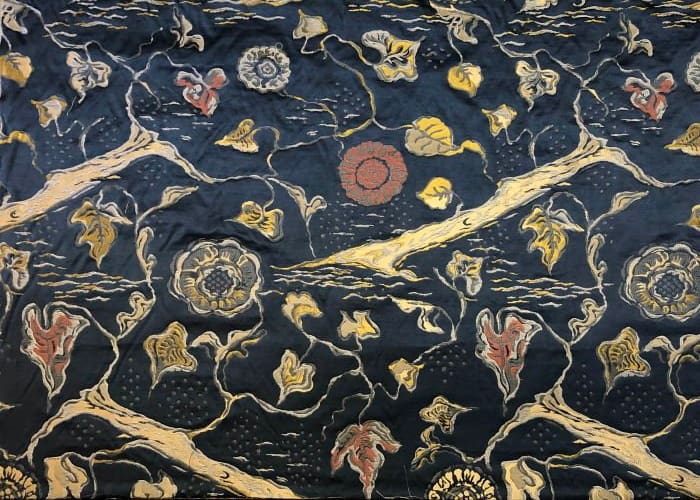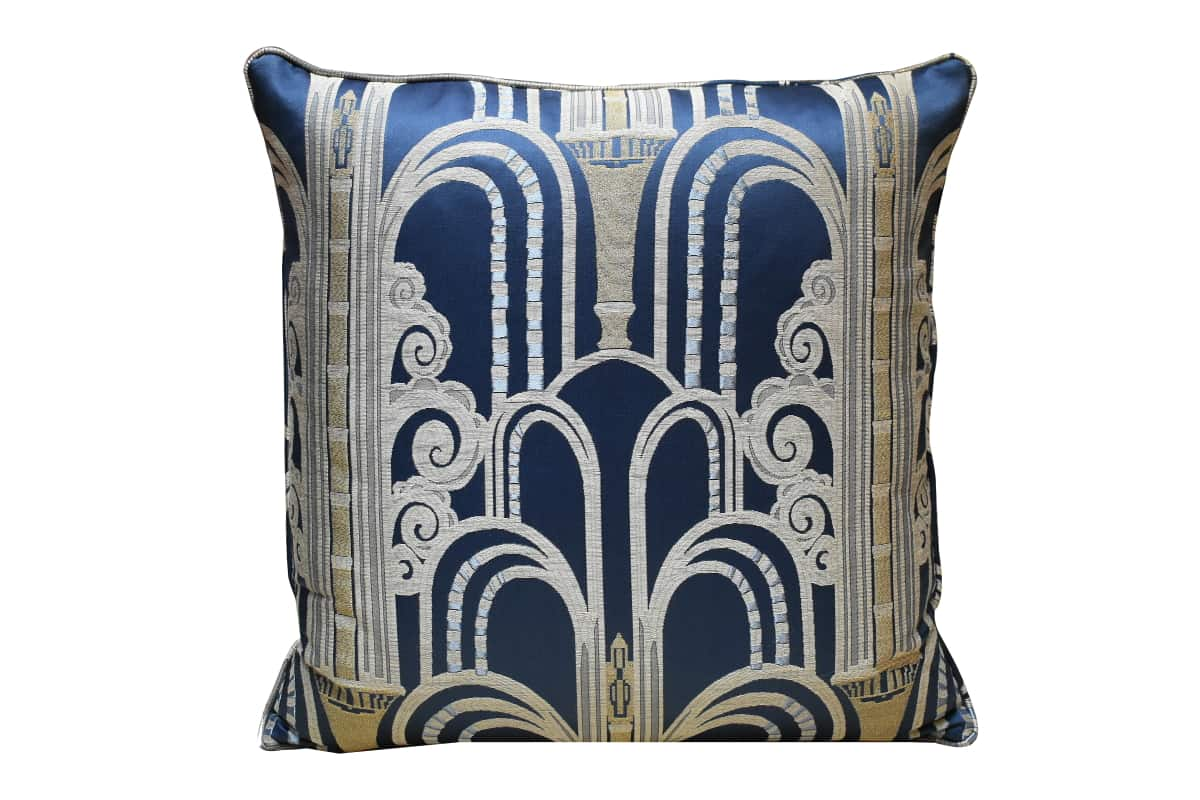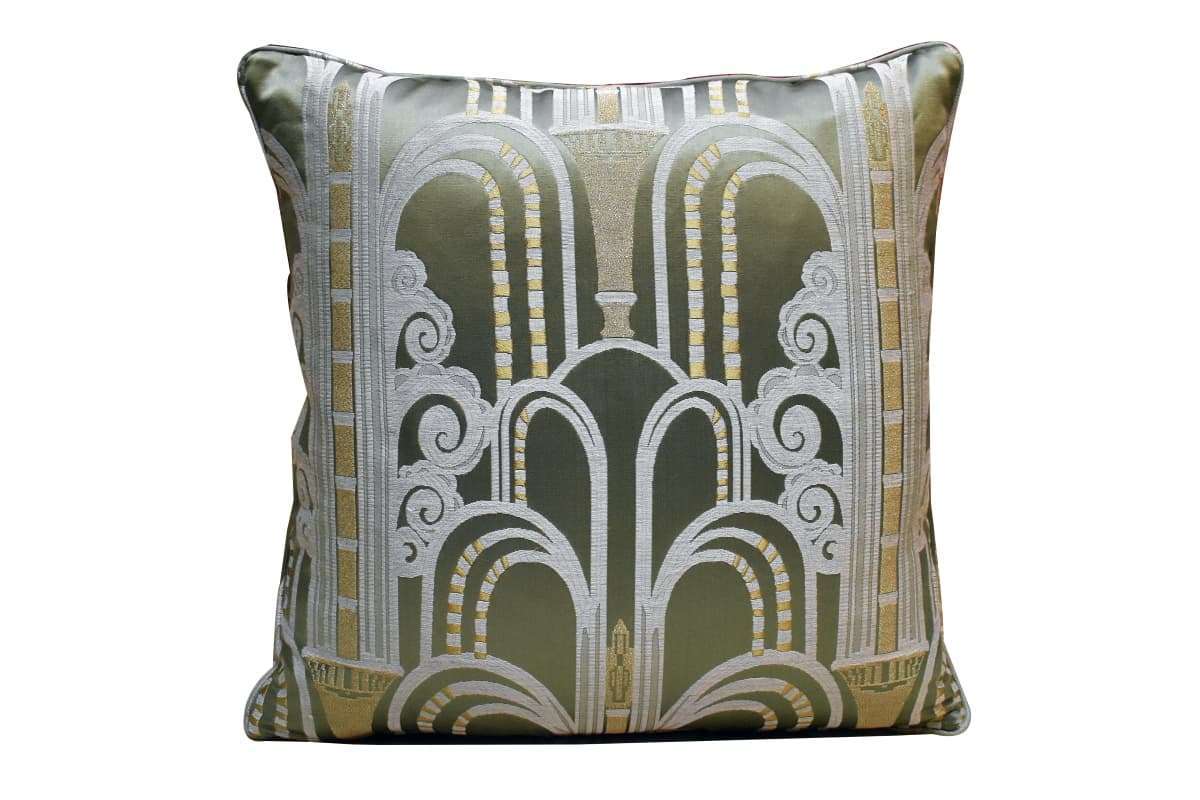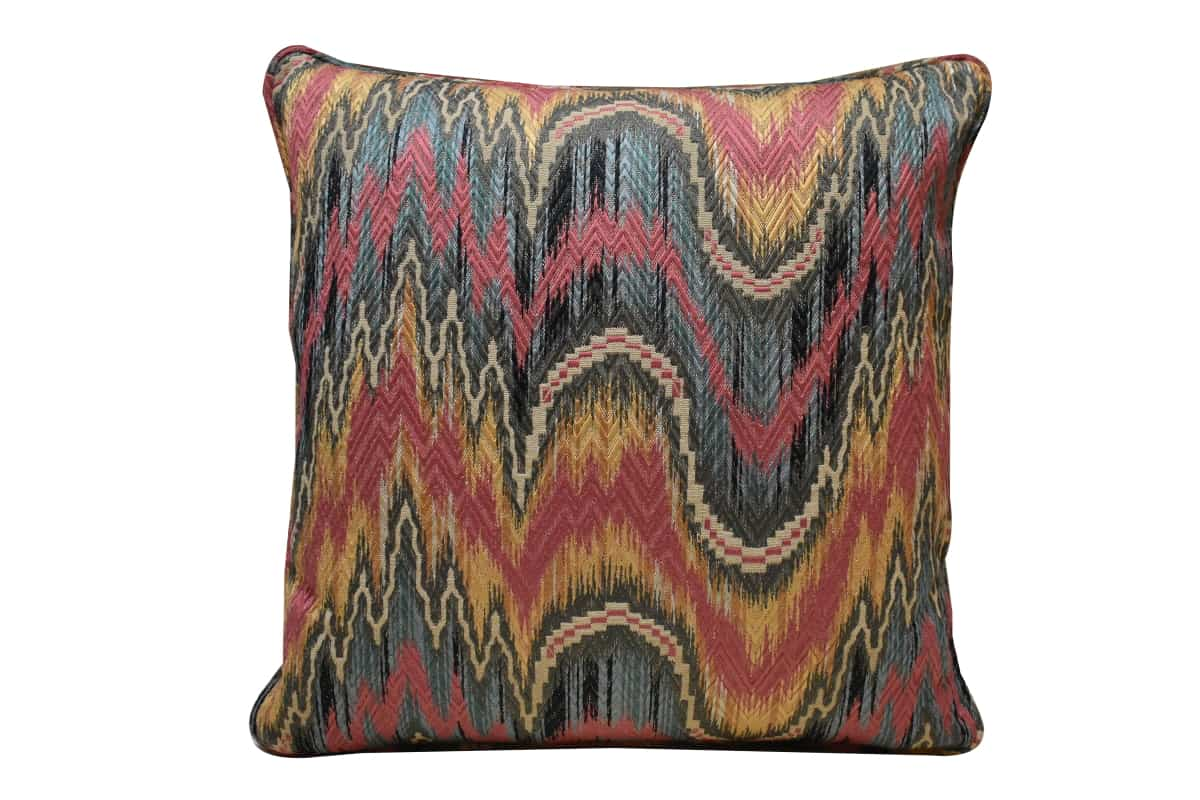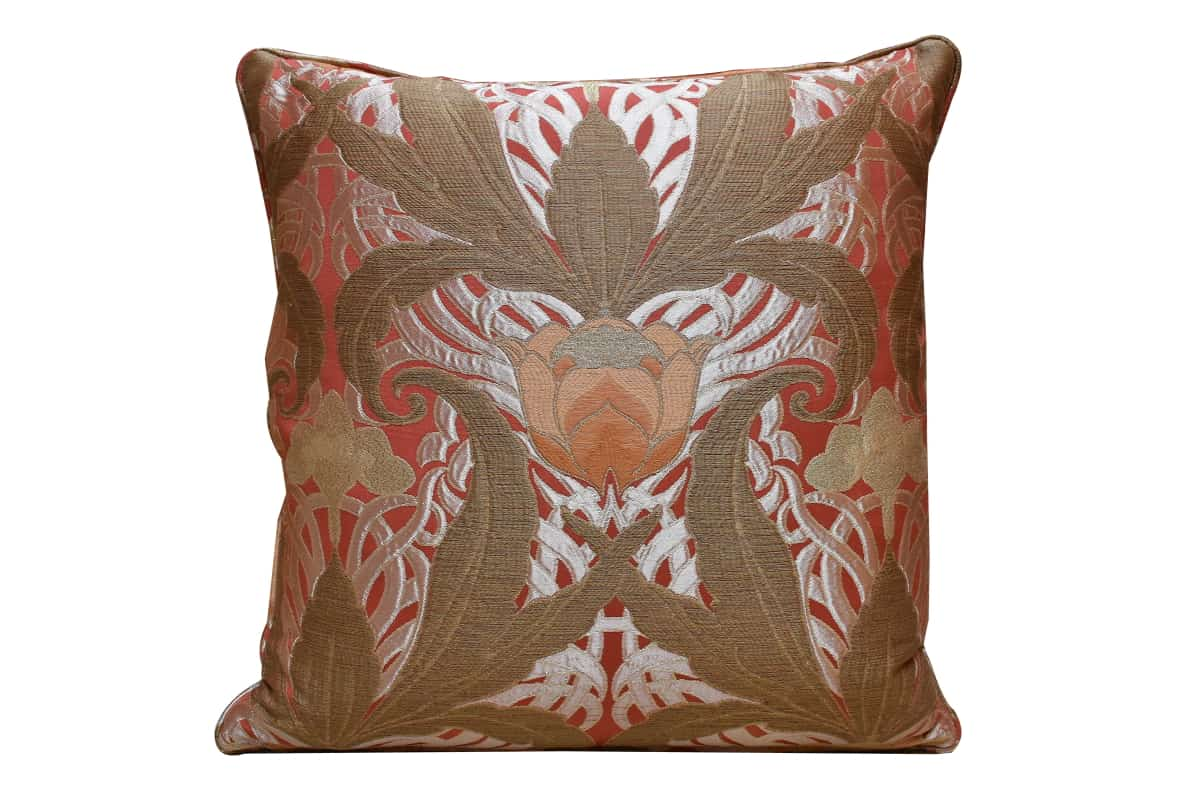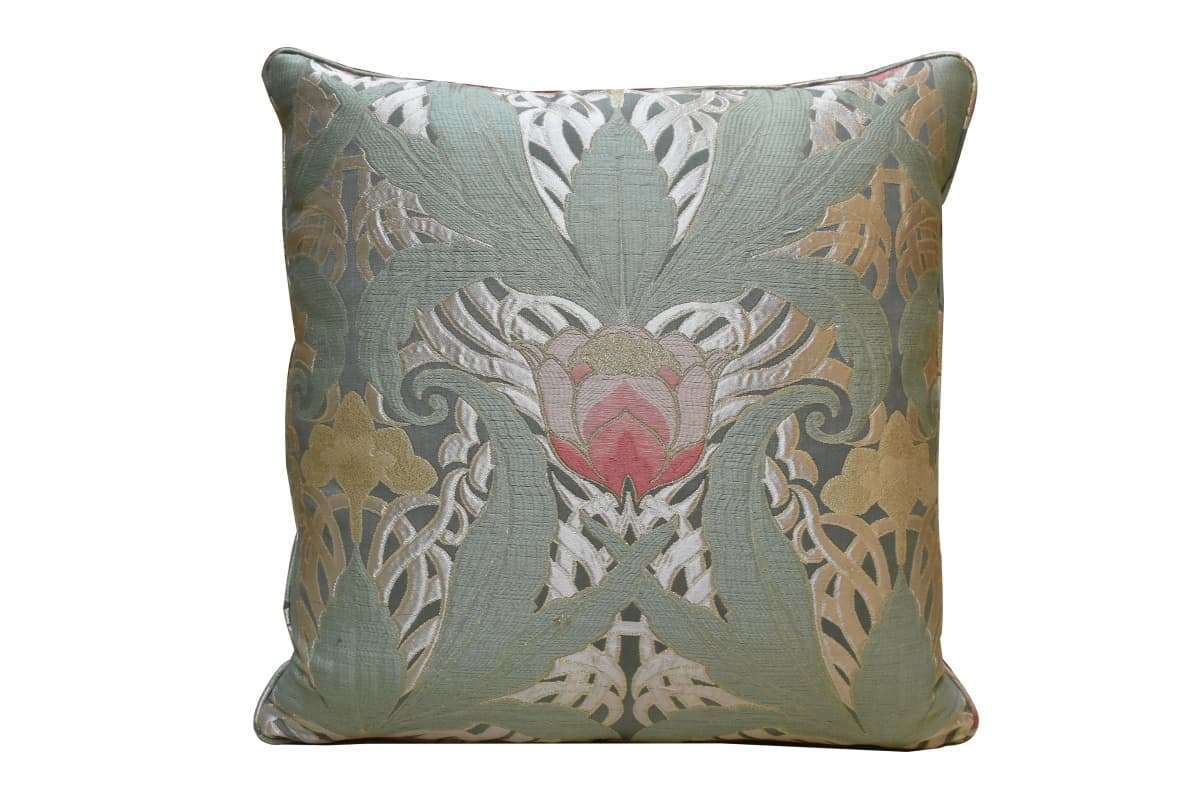A precious fabric with splendid decorations, full of light and colors: the lampas has fascinated for centuries due to its richness and exclusivity and even today is one of the most appreciated fabrics for furnishings and decoration.
The Characteristics of the Lampas Fabric
Lampas is a figured silk fabric, meaning that its patterns and decorations are not printed but woven into the fabric itself, just like damasks and brocades. Its complex textile typology requires two warp systems (the threads placed in the longitudinal direction of the cloth), one for the ground and one for the binding, and at least two series of wefts (threads woven crosswise to the warp). The weave of the lampas, i.e. the way the threads of the fabric are woven, is usually satin or taffeta, which makes the fabric less heavy.
The pattern is achieved by special techniques of weft interlacing. It can be an “untied” weft, in which a ground weft passes over several successive warp threads to create the pattern (lisiéré lampas). Or one or more additional wefts are used in addition to the ground weft. In this way, we can have “lancé” wefts of different colors, which are inserted into the ground construction along the entire length of the fabric, appearing on the front only in the parts that form the pattern. On the back, they remain free and appear to the eye as a series of loose threads. These wefts contribute to the strength of the fabric. Finally, the weft can be “brocade” or “spolinata” which, unlike the previous one, is inserted only in the parts that form the design, as in brocaded lampas.
Example of lampas with lancé weft: Svezia lampas in pearl-ivory
The result is a beautiful polychrome design with a three-dimensional effect that stands out clearly from the background, often embellished and illuminated by metal threads. The possibilities for decorations are endless, as they have followed the changes in style and fashion over the centuries. In our collection of lampas fabrics, we have selected original Renaissance motifs, such as the Melograno lampas, Baroque motifs, such as the Giardinetto lampas, Byzarre motifs, i.e. the Paesaggio lampas, and Art Nouveau motifs, such as the Three Crowns lampas, designed by the Swedish artist Maja Sjöstrom. Among the most recent additions to the collection are the Persiano lampas and the Zebra lampas.
The decorative motif of the Persiano silk lampas shows exotic vegetation with thin shoots in a seemingly random progression with thin curling tendrils, feathery leaves, bell-shaped flowers of various sizes, and buds surrounding human figures wearing oriental clothing that blends in with the plant elements, especially the turban that echoes the flower corollas. The pattern has a vertical serpentine course and is characterized by great dynamism and rhythmic elegance, softened by the thin lines of the figures depicted. This original and eclectic motif dates from the second half of the 17th century and is inspired by the Persian carpets of the period, recalling that Venice was an oriental city par excellence, always under the fascination of the East, with which it was linked by cultural and commercial interests, and whose outlook encompassed the whole of Asia, from India to Turkey and China.
Blue Persiano Lampas
The Zebra silk lampas features an unusual animal motif reminiscent of the zebra’s coat. The fine wavy lines and their orderly, repetitive succession make the pattern a fascinating contemporary optical. The proposed color, light brown, is a neutral of great elegance and refinement.
Light Brown Zebra Lampas
Below you can see some of the lampases in our collection.
A Curiosity: The Difference Between Lampas and Brocade
While in lampas the decoration is obtained with at least one additional weft launched (which runs from one side of the fabric to the other, appearing only in the areas of the design), in brocades the decoration is obtained with additional wefts inserted with special tools called “spolette” (shuttles) only in the areas where they are needed for the design, therefore they are discontinuous wefts. The ground of the brocade can be simple as for the lampas (satin or taffeta), but also figured as lampas – i.e. our Broccato lampas – brocatelle, and velvet, thus enriching the existing decoration.
Broccato Lampas
The Origins of Venetian Lampas
The first Venetian lampases were inspired by the sumptuous silks that the Serenissima imported from the East, along with other luxury goods, and then exported to Western markets. Initially, they were woven on huge and complicated hand looms and their production was regulated and protected by strict laws. It was in the 12th century that Venice began its production of fine silk fabrics, which also benefited from the knowledge and artifacts brought back at the end of the 13th century by the Venetian family Polo, in particular by Marco, after his long stay in China.
Lampas, known and produced in Venice since the Middle Ages, had its period of maximum splendor in the 1500s and 1600s. In the second half of the 16th century, it was used mainly for the clothing of the wealthier classes because of its prestige and value.
In particular, the brocaded lampas was called “Ganzo” in the Serenissima. In the late 1600s and early 1700s, it was the most precious and sought after fabric that supported the Venetian economy. These polychrome silk lampas were made even richer and more spectacular by the massive insertion of additional wefts of gold and silver threads.
Today, lampas is used in interior design for upholstery, tapestries, and curtains, accessories such as decorative cushions, luxury wallpaper, and ecclesiastical vestments, as well as for exclusive clothing.
Walls, Fiamma, and Tulipani Lampas Decorative Pillows
Cover Photo: Uccelli Lampas

